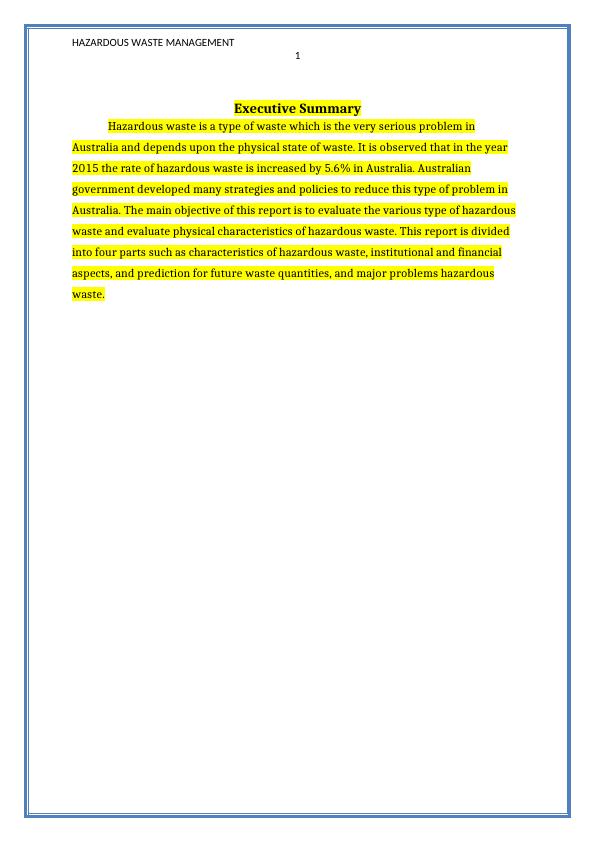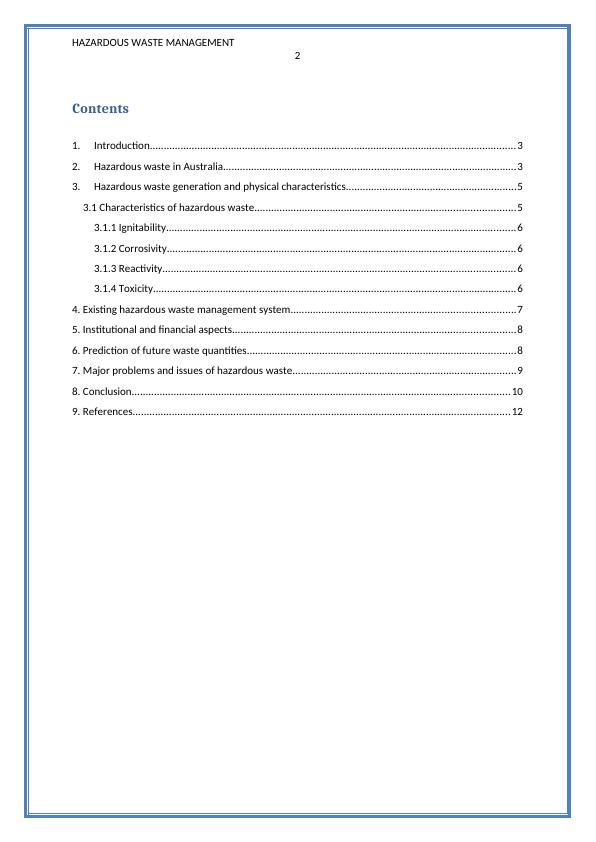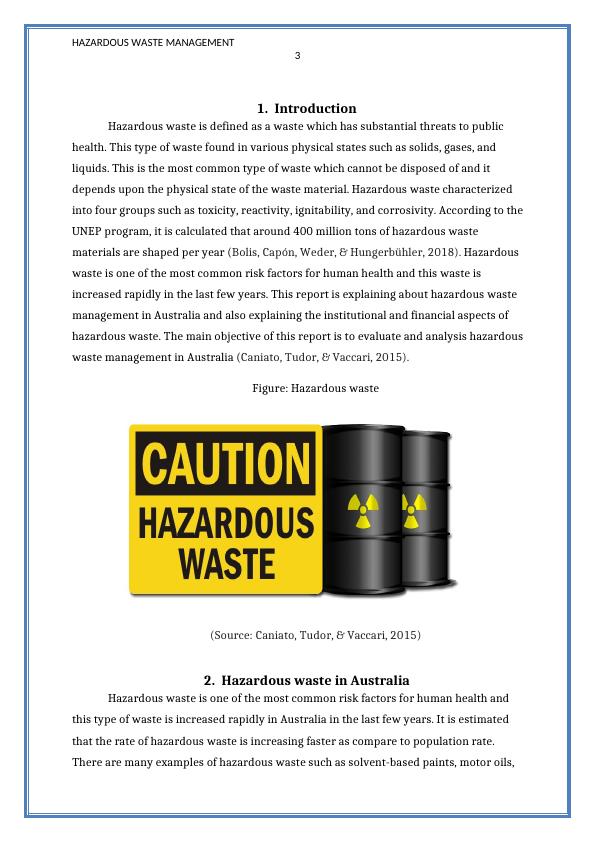Hazardous Waste Management in Australia
15 Pages3370 Words413 Views
Added on 2023-06-10
About This Document
This report evaluates the various types of hazardous waste and their physical characteristics, institutional and financial aspects, existing hazardous waste management systems, prediction of future waste quantities, and major problems and issues of hazardous waste. The report highlights the need for prevention methods and new resources to improve the efficiency and productivity of products in manufacturing industries.
Hazardous Waste Management in Australia
Added on 2023-06-10
ShareRelated Documents
End of preview
Want to access all the pages? Upload your documents or become a member.
Management of Hazardous Liquid Waste Report
|8
|1834
|101
Contingency Plan: Hazardous Waste Management
|5
|1113
|153
Hazardous Waste Management in Delhi: Problems and Solutions
|8
|2693
|242
Management of Hazardous Household Waste Assignment 2022
|27
|6370
|17
Hazardous Waste Management in Nuclear Power Plants
|12
|2631
|66
Hazardous Waste Management in Shanghai, China
|10
|2854
|137




